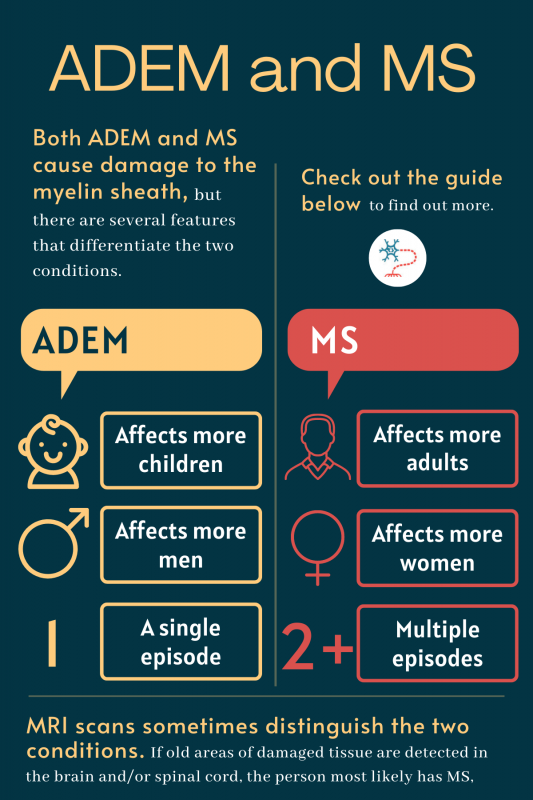
FAQs about ADEM and MS
Acute disseminated encephalomyelitis, known as ADEM, is not an inherited condition. In most cases, it is associated with a recent infection or vaccination. Whether genetic factors may increase the risk of the disease remains unknown.
ADEM, or acute disseminated encephalomyelitis, is most frequently preceded by an infection. Its exact cause remains unclear, but it is thought that infections, vaccinations, or other illnesses may trigger an abnormal immune reaction against myelin, the protective sheath around nerve fibers that is damaged in these patients. Typically, the first symptoms of acute disseminated encephalomyelitis include fever, headache, nausea, and vomiting, which are then followed by neurological symptoms such as confusion, muscle weakness, and vision problems.
Acute disseminated encephalomyelitis usually consists of a single episode of widespread inflammation that damages myelin, the protective sheath around nerve fibers, in the brain and spinal cord. Myelin loss can cause neurological problems, including changes in personality and behavior, and loss of consciousness (encephalopathy). These symptoms typically resolve within six months, but may be sustained in some patients.
Acute disseminated encephalomyelitis is generally treated with anti-inflammatory medications that reduce the damaging inflammation. Most people will experience at least a partial recovery, starting within days of the event, but some patients may experience persistent and debilitating long-term symptoms.
Acute disseminated encephalomyelitis, or ADEM, usually occurs only once, but in some cases, a second event can happen, usually within months of the initial diagnosis. Studies have suggested that patients with specific, abnormal antibodies, or who experience seizures at disease onset, are more likely to experience a relapse.
Related Articles
 Fact-checked by
Fact-checked by 


